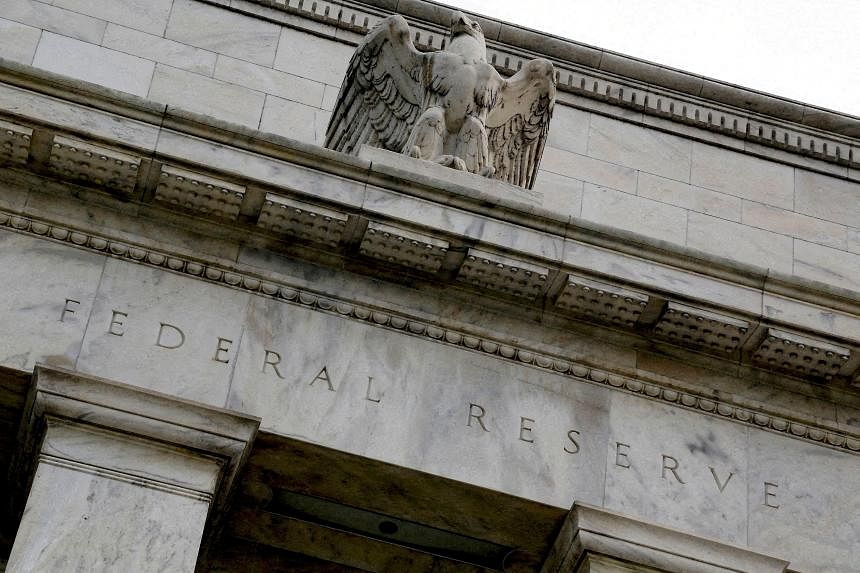


The market's higher neutral rate expectations may pose challenges for bond ETFs such as iShares Core U.S. Aggregate Bond ETF (ARCA:AGG) and Vanguard Total Bond Market ETF (NASDAQ:BND). The neutral rate, also known as R-Star, is expected to trend upward, reversing a long-term downward trend. This may limit the ability to cut interest rates and cause headwinds for bonds. Forward contracts on the five-year interest rate suggest that the market is pricing in a higher floor for yields, which could hamper bond performance. Further gains in bonds may require a more pronounced slowdown in inflation and growth to prompt interest rate cuts. A higher neutral rate would make this scenario less likely. Economists expect data to show that the Fed's preferred gauge of underlying inflation slowed to 2.6% last month, but still exceeds the Fed's goal of 2% inflation. The unemployment rate has been at or below 4% for over two years. At the time of publication, iShares Core U.S. Aggregate Bond ETF was up 0.01%, Vanguard Total Bond Market Index Fund was down 0.04%, and Vanguard Total International Bond Index Fund slipped 0.12%.
The Federal Reserve is preparing for its upcoming Federal Open Market Committee (FOMC) meeting, where decisions on interest rates and monetary policy will be made. Speculation suggests that the Fed may raise its assumption of the 'neutral' policy rate, currently at 0.5%. However, the meeting may not result in an interest rate cut. The Fed's view on the neutral rate will be closely watched by investors as it could impact market expectations on interest rates and the stock market. Additionally, the meeting will include an updated quarterly 'dot plot' on policymaker projections and discussions on slowing the Fed's balance sheet runoff. The implications of U.S. disinflation and revisions to immigration statistics on the long-term trajectory of the labor force will also be addressed.
Christopher Waller, member of the Federal Reserve Board, commented on the US economy and the rising US neutral rate. Waller's stance is hawkish, suggesting that the economy needs higher interest rates to combat inflation pressures. He believes that demographics and financing pressures will contribute to the rise of the US neutral rate in the coming years. Changes in banking regulations, central bank roles, and capital market liberalization are not expected to have a significant impact on raising the neutral rate. The demand for US safe and liquid assets has pushed down treasury yields and the neutral rate. Waller also mentioned that the US dollar remains the world's reserve currency and recent events indicate increased influence for the dollar. The real 10-year treasury yield is a good proxy for the theoretical value of the neutral rate. However, Waller emphasizes the need for humility when citing the numerical value of the neutral rate.
Federal Reserve Governor Christopher Waller stated that the prolonged slump in the neutral interest rate could reverse in the future due to the 'unsustainable fiscal path' of the U.S. He mentioned that if the growth in the supply of U.S. Treasuries exceeds demand, it will lead to lower prices and higher yields, putting upward pressure on the neutral interest rate. The neutral interest rate, known as r*, is a theoretical concept without a reliable way to determine its value. In March, Fed officials estimated r* to be 2.4%-3.8%. The long-term decline in r* has been driven by factors such as robust demand for Treasuries, global liberalization of capital markets, lower inflation, and less volatile economic activity. Waller believes that these factors cannot explain the recent increase in r*, but they may contribute to an increase in the future.
Despite the highest Federal Reserve policy rates in two decades, the US economy grew about 2.5% last year, unemployment remains low, and stocks are near all-time highs. However, this doesn't mean the US will be permanently rate-insensitive. Economists have generally believed that the longer-run 'neutral' Fed policy rate was around 2.5%, but recent surveys show a shift in views, with the median respondent now seeing rates settling at around 3%. Traders are also betting on rates staying at around 4% into at least 2026. However, projections miss the particular and fast-changing circumstances of the current moment. The 10-year Treasury yield, which drives important borrowing costs, hasn't tightened as much as the fed funds rate. The 'lock-in effect' has shielded consumers and businesses from higher rates, but this dynamic isn't permanent. The near-universal adoption of the 'higher rates forever' thesis is questioned, as even the bottom 25% of economists now see the longer-run neutral policy rate drifting up to 2.75%. The article suggests that the economy is behaving in bizarre ways for the time being, and caution is needed when assuming that the world has fundamentally changed forever.
The bond market is showing a worrying sign that the economy's neutral rate, a level of borrowing costs that neither stimulates nor slows growth, is higher than projected by policymakers. This could limit the Federal Reserve's ability to cut interest rates and set up a headwind for bonds. Forward contracts suggest that the market's view of where US rates might end up is higher than the average over the past decade and above the Fed's estimate. The elevated floor for yields could potentially limit how far bonds can run, which is a concern for investors. However, the market is currently optimistic, with Treasury returns down only 0.3% in 2024 and traders betting on interest rate cuts and a bond market rally. The true level of the neutral rate is subject to debate, with expectations for increased government budget deficits and investment for battling climate change potentially causing an upward shift. Further gains in bonds may require a more pronounced slowdown in inflation and growth, but the Fed's policy may not be restrictive enough as the S&P 500 continues to hit records. While most policymakers are moving to the camp of higher neutral rates, their estimates vary. Fed Chairman Jerome Powell downplayed the importance of the neutral rate in the Fed's decision-making. Overall, the bond market's view of the neutral rate could be a potential roadblock for a bond rally. [9f605502]
Bond markets are indicating that high US interest rates may last for a long time, potentially forever. While there is optimism among investors that a rally in US Treasuries is about to take off, the bond market is flashing a worrying sign. The growing view in markets is that the US economy's neutral rate, a theoretical level of borrowing costs that neither stimulates nor slows growth, is much higher than what the Federal Reserve is projecting. Forward contracts referencing the five-year interest rate in the next five years have stalled at 3.6%, which is more than one full percentage higher than the average over the past decade and above the Fed's own estimate of 2.75%. This suggests that interest rates over the next ten years or so could be higher than they were over the last 10 years. The market is pricing in a more elevated floor for yields, potentially limiting how far bonds can run. However, investors are currently optimistic and betting that the Fed will start cutting interest rates as soon as September. The true level of the neutral rate, or R-Star, is subject to debate, but expectations for large government budget deficits and increased investment for battling climate change are reasons for a possible upward shift. Further gains in bonds may require a more pronounced slowdown in inflation and growth to prompt interest rate cuts more quickly and deeply than the Fed currently envisions. The performance of financial markets also suggests that the Fed's policy may not be restrictive enough. The S&P 500 has hit records almost daily, even as shorter maturity inflation-adjusted rates have surged nearly 6 percentage points since 2022. Most policymakers are moving to the camp of higher neutral rates, but their estimates vary between 2.4% to 3.75%. The uncertainties in making the forecasts underscore the challenges in determining the neutral rate. Overall, the bond market's view of a higher neutral rate poses a potential roadblock for a bond rally. [38634137]
The market's higher neutral rate expectations may pose challenges for bond ETFs such as iShares Core U.S. Aggregate Bond ETF (ARCA:AGG) and Vanguard Total Bond Market ETF (NASDAQ:BND). The neutral rate, also known as R-Star, is expected to trend upward, reversing a long-term downward trend. This may limit the ability to cut interest rates and cause headwinds for bonds. Forward contracts on the five-year interest rate suggest that the market is pricing in a higher floor for yields, which could hamper bond performance. Further gains in bonds may require a more pronounced slowdown in inflation and growth to prompt interest rate cuts. A higher neutral rate would make this scenario less likely. Economists expect data to show that the Fed's preferred gauge of underlying inflation slowed to 2.6% last month, but still exceeds the Fed's goal of 2% inflation. The unemployment rate has been at or below 4% for over two years. At the time of publication, iShares Core U.S. Aggregate Bond ETF was up 0.01%, Vanguard Total Bond Market Index Fund was down 0.04%, and Vanguard Total International Bond Index Fund slipped 0.12%. [3ba35138]